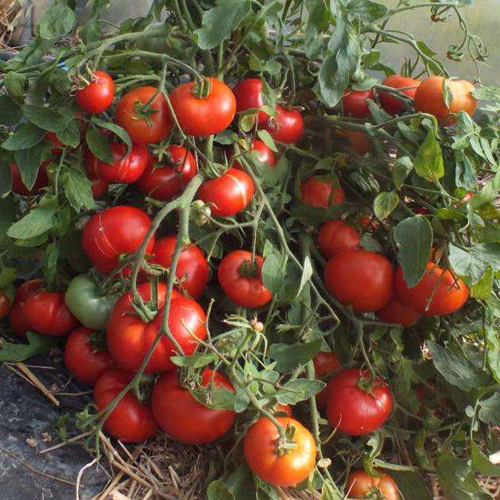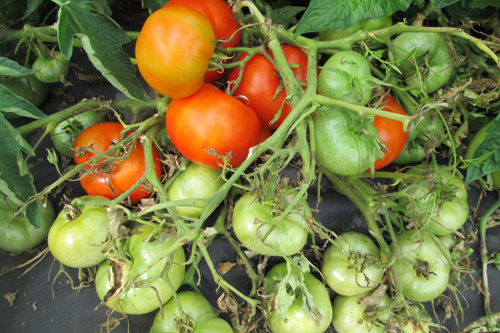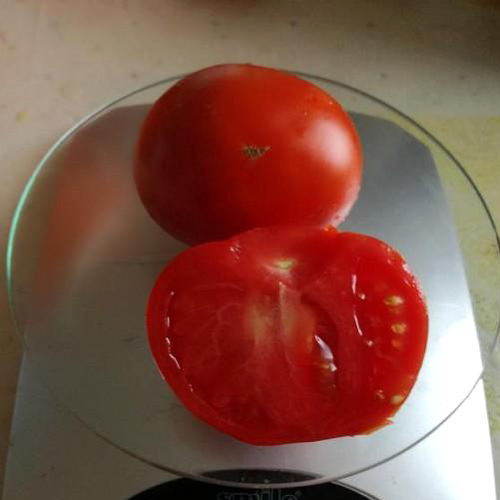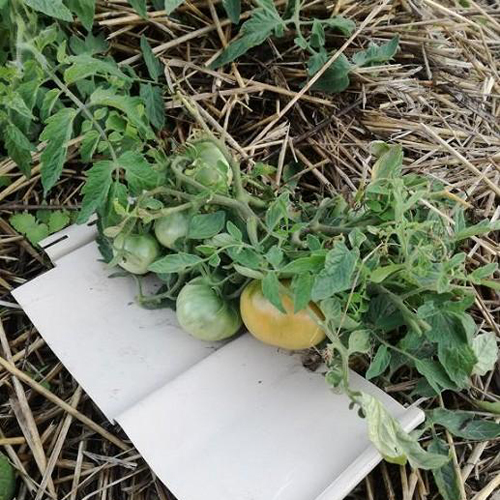Tomato variety Mongolian dwarf
There are tomato varieties that are quite famous among vegetable growers, the seeds of which cannot be found on the websites of large seed companies. Among such rare varieties that tomato growers willingly share with each other, the Mongolian dwarf is of great interest. The species is not listed in the State Register of Breeding Achievements of the Russian Federation, but it is grown throughout Russia. This tomato was especially popular in regions with short and cool summers - in Siberia, the Urals and the Far East. Suitable for open ground, although it grows well indoors. The variety has unique characteristics that actually make it very popular. Although among the many laudatory reviews, there are still negative ones. The plant is not hybrid, so seeds for further cultivation can be safely collected on your own.

Description
The plant is superdeterminate, not a standard plant, undersized, only 20 - 30 cm high. But a bush with a "secret" - it does not have a central vertical stem. About 4 - 5 shoots are formed from the root collar, which, as they grow, at a height of 15 - 20 cm, bend and begin to creep along the ground. Then they form stepchildren, which also spread over the soil surface. As a result, up to 15 shoots can grow on one plant. Thus, a creeping tomato bush is formed, growing up to 1 meter in diameter. The stems and shoots of the Mongolian dwarf are quite powerful, covered with light pubescence. The leaves of the variety are small, petioled, green, with a slightly corrugated surface, pubescent. Flowers are formed on the upper side of the stem, therefore, the set fruits lie on a bed of foliage and shoots, as it were, without touching the ground, which is very important. Fruit clusters are formed in almost every leaf sinus. One cluster contains about 3 - 6 ovaries. The peduncle is articulated.

Fruits are round or flat-round, sometimes with slight ribbing. In an unripe form, the tomato is green, when ripe it turns red, it has no spots at the stalk. The skin is smooth, glossy, thin, but in principle strong. The pulp of the Mongolian dwarf fruit is very fleshy, moderately dense, juicy, tender, without voids and white seals. The section shows small seed chambers, there are 4 or more of them. The seeds are small. The taste of the variety is good, but many say about it this way - ordinary, sweet and sour, although the sourness is not very pronounced. A well-ripened tomato tastes rather sweet. The average fruit weight is 150 grams. The first tomatoes are larger than 200 grams, sometimes a little more, the ones that are set later are somewhat smaller, 100-120 grams each.

Characteristics
- The Mongolian dwarf is ultra-early maturing, which is especially prized in cold regions. Ripening occurs starting from the 80th day after the appearance of full shoots, therefore, depending on the time of sowing the seeds, the first tomatoes can be tried in late May-early June;
- the fruiting period can be extended, that is, the formation of ovaries and the beginning of ripening correspond to early ripening species, which together yield the harvest, but fruit clusters are formed until the very cold;
- the yield is high, according to reviews, a bucket of tomatoes is harvested from one bush. Of course, deplorable results also happen - a little more than 1 kg per plant, but this is most likely an exception;
- stress resistance and adaptability of the variety to bad weather conditions is very high. Despite the unfavorable climate, the Mongolian dwarf grows rapidly and forms ovaries;
- the variety has good drought resistance;

- thanks to the creeping shape, the bushes do not suffer from strong winds;
- tomatoes lying on the ground do not rot and do not freeze in the event of recurrent cold weather;
- but during the period of prolonged rains, the largest tomatoes may crack near the stalk;
- the immunity of the Mongolian dwarf is high, the early ripening variety, as a rule, manages to get away from phytophthora. Sometimes it can be slightly affected by this disease at the end of August, when the night temperature is much lower than the daytime;
- fruits lying on the ground are often attacked by slugs, so ripe tomatoes need to be picked in time;
- the transportability of the fruits is not bad;
- the way of use is universal. The fleshy and juicy flesh makes tomatoes ideal for salad use; medium-sized fruits are good for canning whole fruits. Most opinions about the use of the crop of this variety are inclined in favor of processing into tomato products - they are of excellent quality.
Agrotechnics
It is still better to plant this unusual culture in a seedling way. But here it is necessary not to miss the sowing time. The gardeners who first raised the Mongolian dwarf sowed seeds as usual in March. As a result, the plant gave the first fruits ripe, and the rest, tied in abundance, simply did not have time to ripen. Seedlings are transplanted into the ground at the age of 55 - 60 days. Before that, after the appearance of 2 true leaves, a dive is carried out, and then, 2 weeks before transplantation, hardening. If the bush is grown in a spread, then at least 70 cm should be left between the plants in the row.Tying the tomatoes to the support is not worth it, because the resulting stepchildren will steadily strive downward. It is best to spread dry straw under the sprawling plant, it will protect the fruits from pollution, prevent weeds from growing and retain moisture in the soil. Patching for this variety is not carried out. Complex fertilizers are used as top dressing. For slugs, you can use the preparation "Thunderstorm", pouring the granules on small plates and spreading them between the shoots in the garden. In the conditions of a short summer, it is necessary to remove the inflorescences formed by the last, since the ovary on them will no longer ripen, but will draw off nutrition to itself, inhibiting the ripening of the remaining fruits.
For many gardeners, especially those who do not have the opportunity to often visit their plots, the Mongolian dwarf is a real find. It is also called a variety for the lazy. This is partly true. After all, care is practically not carried out, the bush spreads itself on the ground, does not require pinching. A good harvest is tied in spite of the bad weather. Tomatoes are used universally. And let someone say there are tastier varieties. But in terms of yield and ease of care, they cannot be compared with this tomato.








